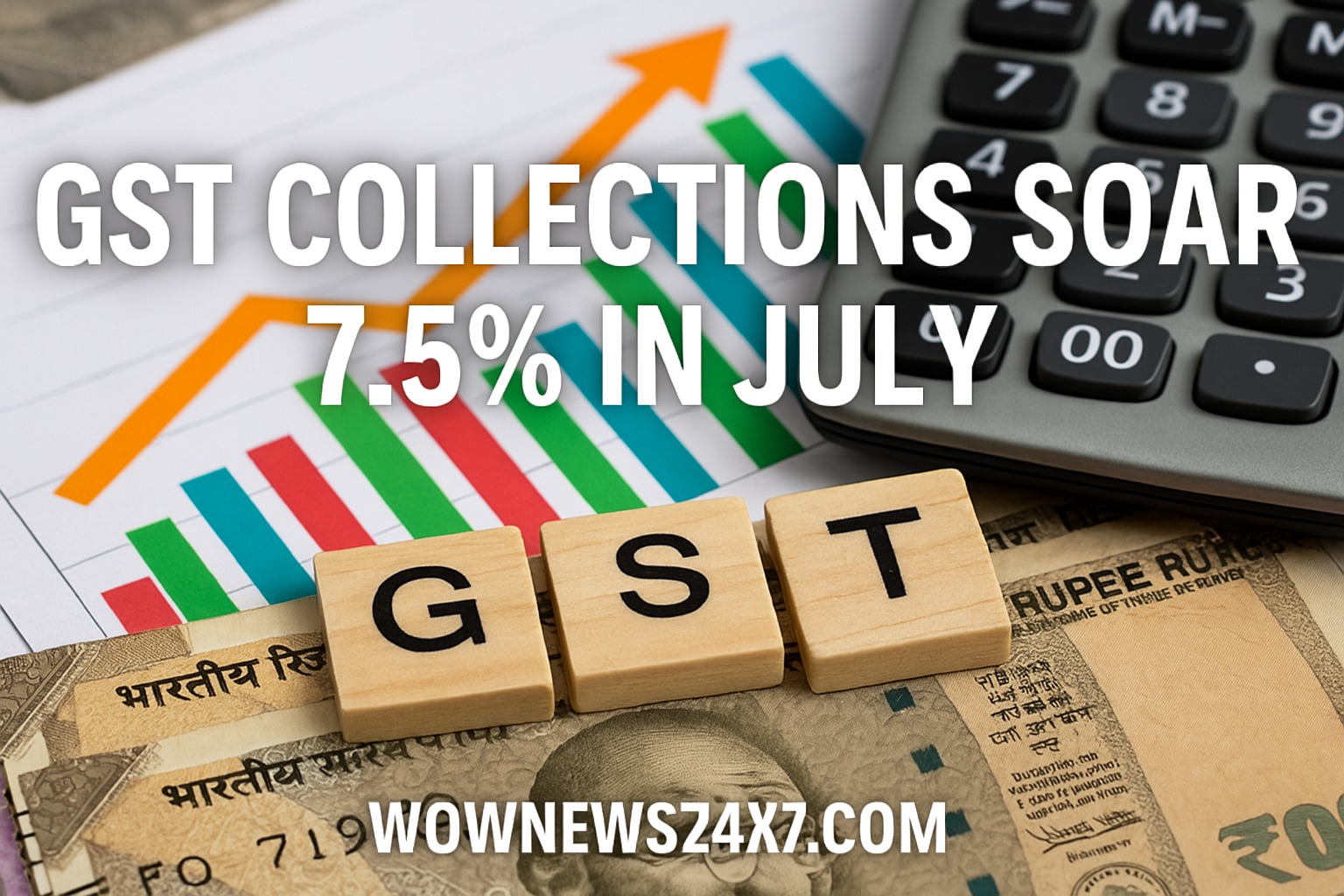India’s Goods and Services Tax (GST) machine kept humming in July 2025, as gross collections hit ₹1.96 lakh crore—a robust 7.5% year-on-year increase that has policymakers, tax professionals, and businesses analyzing the drivers behind this steady rise.
GST Collections: The July 2025 Snapshot
Government data released on August 1 revealed that July’s gross GST revenue topped ₹1,95,735 crore, up from ₹1,82,075 crore a year earlier. Net collections, after refunds, stood at ₹1,68,588 crore, marking a modest 1.7% uptick—a slowdown compared to previous months, but still indicative of resilience in India’s consumption and compliance landscape.
Domestic transactions: Collection grew 6.7% to ₹1.43 lakh crore, showing stable domestic market activity.
Imports: Revenue here surged 9.5%, reaching ₹52,712 crore—a testament to buoyant inbound trade and persistent demand for imported goods.
Why Are GST Collections Rising?
1. Stronger Consumption & Economic Activity
Despite global headwinds, India’s domestic consumption remains steady. Key sectors—automobiles, FMCG, construction, and electronics—continue to post healthy sales, feeding GST numbers. Manufacturing activity hit a 16-month high in July, reflecting an expanding economy. Some states like Andhra Pradesh and Punjab led the surge, recording over 14% annual GST growth, driven by robust tax administration and uptick in local consumption.
2. Imports Continue to Climb
Imports formed the backbone of July’s GST surge. The 9.5% growth in GST from imports reflects consumer demand for foreign goods and essential industrial inputs, from electronics and gold to machinery. Resilient global trade and a recovering rupee also kept import bills—and GST inflows—from losing steam.
3. Fitter GST Systems & Amped-Up Compliance
The government’s push for digitization, analytics, and tighter compliance has delivered results. E-invoicing mandates, real-time audit tools, and expanded taxpayer tracking continue to reduce evasion and plug leakages, widening the tax base and raising voluntary compliance. Fast-tracked refunds and improved ease of doing business have also made the GST regime more attractive to businesses, boosting overall collections.
4. Policy Shifts and Enforcement
State-level enforcement actions—especially in Punjab and Andhra Pradesh—have tightened the net on tax evasion. Penalty recoveries, fraud busts, and tax amnesty schemes (encouraging defaulters to clear dues) fueled revenue. The government's focus on “maturity” in GST systems is resulting in prompt refunds and cleaner books, albeit at the expense of headline net revenue growth.
The Surprising Role of Refunds
One of July’s key stories was the record jump in GST refunds—up 66.8% year-on-year to ₹27,147 crore. While this kept net revenue growth modest, it signaled a maturing tax system and healthier business cash flows. Refunds shot up especially due to faster processing for exporters, more claims from inverted duty structures, and excess payments correction.
Regional Trends & Disparities
Some large states, such as Maharashtra (₹30,590 crore; 6% growth), Karnataka (₹13,967 crore; 7%), Gujarat (₹11,358 crore; 3%), and Tamil Nadu (₹11,296 crore; 8%), drove bulk collections. However, certain states like Jammu & Kashmir and Chandigarh saw minor contractions, reflecting uneven recovery and localized slowdowns.
What’s Next for GST?
Experts believe that with the festive season approaching and GDP growth projected around 7% for FY26, GST collections are likely to remain buoyant. Policymakers are, however, keeping an eye on rising refunds, regional disparities, and structural issues like inverted duty structures, which may prompt fresh reforms to further bolster the tax regime.
The continued climb in GST collections—despite slower net revenue growth—signals both a maturing tax system and the underlying strength of India’s consumption story.
Relevant Sources: Economic Times, ClearTax, CNBC TV18, Times of India, Deccan Herald, Business Standard, The Hindu, New Indian Express, DD News, Tax & Compliance blogs, Official GST Data Releases, State Government Reports

